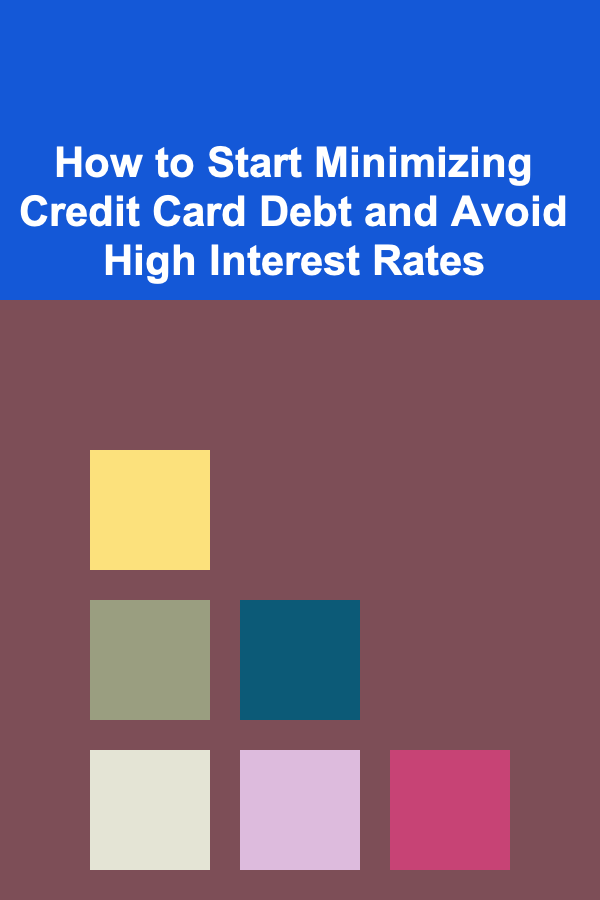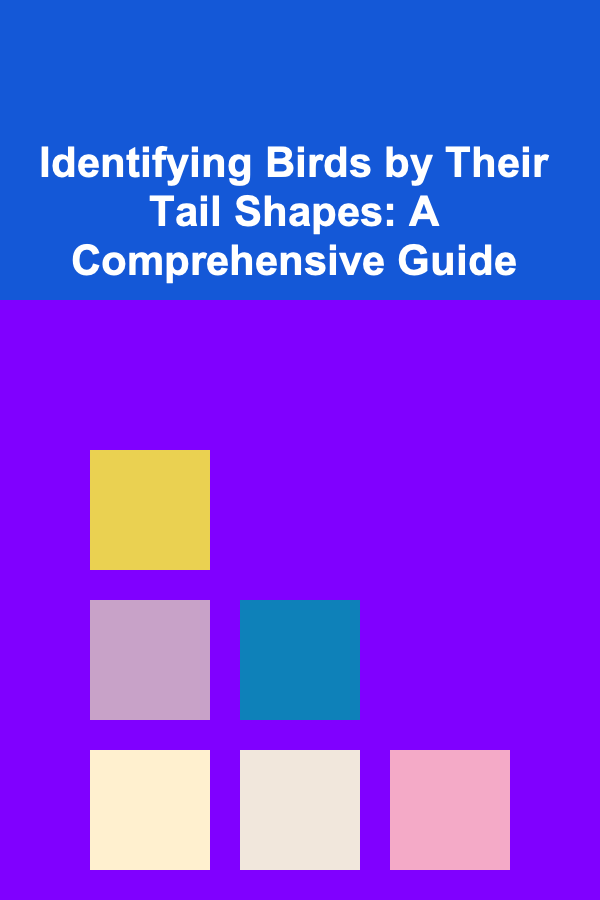
How to Start Minimizing Credit Card Debt and Avoid High Interest Rates
ebook include PDF & Audio bundle (Micro Guide)
$12.99$8.99
Limited Time Offer! Order within the next:

Credit card debt can be a significant burden on your financial health, especially when high interest rates prevent you from making substantial progress in paying off what you owe. It's easy to fall into a cycle of paying off just the minimum amount due, only to see your balance barely shrink, while interest compounds and charges additional fees. However, with some strategic planning and discipline, you can start minimizing your credit card debt and avoid paying exorbitant interest rates that can keep you in a financial rut.
This actionable guide will take you step by step through the process of reducing credit card debt, offering practical strategies to help you minimize your outstanding balances and avoid high-interest traps.
Assess Your Current Debt Situation
Before taking any action, it's crucial to understand the full extent of your credit card debt. This first step allows you to create a clear picture of your financial obligations and assess what needs to be prioritized.
a. List All Credit Cards and Balances
Start by writing down all your credit cards, the balances on each, the interest rates, and the minimum payment due for each card. Make sure to include any late fees or other charges that have been added to your balance.
b. Understand the Interest Rates
Identify which cards have the highest interest rates. These are the ones that are accumulating the most interest, making it difficult to pay off your debt. You should prioritize paying these off as quickly as possible.
c. Check Your Credit Reports
Review your credit report to ensure there are no errors or fraudulent charges. It's also a good idea to check your credit score, as a lower score can affect your ability to secure better interest rates on future loans or balance transfers.
Stop Using Your Credit Cards
One of the most important steps to take when minimizing credit card debt is to stop adding to it. If you keep charging purchases to your credit cards while trying to pay off existing balances, you'll only find yourself in a never-ending cycle of debt.
a. Cut Back on Non-Essential Spending
Evaluate your spending habits and cut back on unnecessary purchases. This might mean delaying purchases you've been planning or finding alternative ways to pay for things, such as using cash or a debit card instead.
b. Leave Cards at Home
Physically removing your credit cards from your wallet or purse can help reduce the temptation to use them. If necessary, leave your cards at home when you go out to ensure you're not tempted to make impulsive purchases.
c. Set a Budget
Create a monthly budget that allocates a set amount for essential spending, leaving little room for extra charges. Make sure to track your expenses to avoid falling into old habits.
Prioritize Paying Off High-Interest Cards First
Now that you've stopped adding to your credit card balances, it's time to focus on paying off what you owe. The most effective method for tackling credit card debt is the debt avalanche method, which involves prioritizing the debts with the highest interest rates first.
a. Pay More Than the Minimum Payment
Paying only the minimum required payment is one of the slowest ways to get rid of credit card debt. Minimum payments typically cover only a small portion of the balance, with the rest going toward interest. Aim to pay as much as you can afford above the minimum payment, especially on the card with the highest interest rate.
b. Consider the Debt Avalanche Method
With the debt avalanche method, you focus on the credit card with the highest interest rate first. Once that balance is paid off, you move to the next highest interest rate card, and so on. This method saves you the most money in interest over time.
c. Avoid Accumulating More Debt
If you can pay off one credit card, avoid using it again until the balance is fully paid off. Instead, focus on using only the cards with the lowest interest rates or use cash as much as possible.
Consider a Balance Transfer
If you have a significant amount of credit card debt on a card with a high interest rate, consider transferring the balance to a card that offers a low or 0% introductory APR for balance transfers. This can give you a period of time (often 6--18 months) where you're not charged interest, allowing you to focus entirely on paying down the balance without accruing additional interest.
a. Understand the Fees and Terms
Some balance transfer offers come with fees (usually 3--5% of the transferred amount) and introductory periods that may expire. Ensure you understand these terms before committing to a balance transfer.
b. Plan for the End of the Introductory Period
If you use a balance transfer, create a plan to pay off the balance within the interest-free period. If you still have an outstanding balance after the introductory period ends, you could face high-interest rates on the remaining balance.
Consider Debt Consolidation
Debt consolidation is another option if you have multiple credit cards with high interest rates. Debt consolidation involves combining multiple credit card balances into one loan or credit card with a lower interest rate.
a. Personal Loans for Debt Consolidation
You may be able to take out a personal loan with a lower interest rate to pay off your credit cards. Personal loans often come with fixed interest rates, which can be beneficial compared to the fluctuating rates on credit cards.
b. Home Equity Line of Credit (HELOC)
If you own a home, a home equity line of credit (HELOC) might be an option. It allows you to borrow against your home's equity and use the funds to pay off high-interest credit card debt. However, this option comes with risk, as your home is collateral.
c. Debt Management Plans
If you're struggling to manage multiple credit card debts, working with a nonprofit credit counseling agency to set up a debt management plan (DMP) could be a good option. A DMP consolidates your debt into one monthly payment and may result in lower interest rates and waived fees.
Negotiate Your Interest Rates
If you have a good payment history with your credit card company, you may be able to negotiate a lower interest rate. Credit card companies would rather reduce your interest rate than lose you as a customer, especially if you've been paying on time.
a. Call Your Credit Card Issuer
Call your credit card issuer and ask for a reduction in your interest rate. Be polite but firm, and explain your current financial situation. If you've been a loyal customer, highlight your payment history and any other positive aspects of your relationship with the company.
b. Explore Promotional Offers
Some credit card issuers offer promotional interest rates for customers who are at risk of falling behind on payments. You may be able to negotiate a temporary lower rate to help you pay down your debt faster.
Build an Emergency Fund
While focusing on paying down your credit card debt, it's also important to build an emergency fund. Having a financial cushion can prevent you from relying on credit cards in case of unexpected expenses, such as medical bills or car repairs.
a. Start Small
Aim to set aside a small portion of your income each month for an emergency fund. Even saving a few hundred dollars can help you avoid falling back into debt.
b. Keep the Fund Separate
Store your emergency fund in a separate savings account that is not tied to your credit cards. This ensures that you don't dip into it for non-emergencies.
Monitor Your Progress Regularly
Track your progress regularly to stay motivated and on top of your goals. Keep an eye on your credit card balances, interest rates, and payment due dates. Celebrate your victories, no matter how small, and keep adjusting your strategy as needed.
a. Set Milestones
Set achievable milestones for your debt repayment, such as paying off one credit card or reaching a specific dollar amount of debt reduction. Reward yourself (responsibly) when you reach these milestones to stay motivated.
b. Adjust Your Strategy
If you find that your current plan isn't working, don't hesitate to adjust your approach. You might need to adjust your budget, cut back on non-essential expenses, or look for additional income sources to pay off your debt faster.
Conclusion
Minimizing credit card debt and avoiding high interest rates requires discipline, planning, and sometimes a little bit of sacrifice. By assessing your debt, creating a repayment plan, negotiating lower interest rates, and exploring debt consolidation or balance transfer options, you can take control of your financial situation and make meaningful progress toward becoming debt-free. Remember, the key is consistency and staying focused on your long-term financial health.

Building Passive Income Streams Using Deep Learning Models
Read More
How to Maintain Your Rental Property on a Budget
Read More
How to Make Your Home Look Bigger with Budget Decorating Tips
Read More
How to Use a Second Language to Make Money
Read More
Mastering Finance Leadership: A Comprehensive Guide for Chief Financial Officers
Read More
Identifying Birds by Their Tail Shapes: A Comprehensive Guide
Read MoreOther Products

Building Passive Income Streams Using Deep Learning Models
Read More
How to Maintain Your Rental Property on a Budget
Read More
How to Make Your Home Look Bigger with Budget Decorating Tips
Read More
How to Use a Second Language to Make Money
Read More
Mastering Finance Leadership: A Comprehensive Guide for Chief Financial Officers
Read More